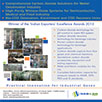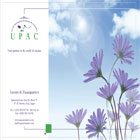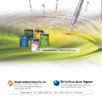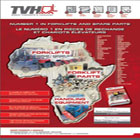

M a r k e t N e w s
Rwanda: 2015/2016 Infrastructure Sector Achievements and 2016/17 Targets
Posted on : Wednesday, 5th October 2016
The 2015/16 key achievements of the Ministry of Infrastructure reflect the key performances of four sectors: Transport, Energy, Water & Sanitation and Urbanization & human settlement.
These key achievements are grounded on the targets that were set during the fiscal year 2015/2016 against the key objectives outlined in the long term National programs such as Vision 2020, EDPRS II, 7 YGP, Sector Strategic Plan and other national priorities.
Energy sector: powering national development
The Government of Rwanda has directed much effort and injected resources in the energy sector for a sustainable economic growth that has seen electricity access in Rwanda growing rapidly. With different programs and initiatives, grid connections through the government's Electricity Access Roll-out Programme (EARP) and related initiatives have increased through both on-grid and off-grid solutions.
As a result, in rural electrification, 89,964 households were connected to the grid with 37,250 households on off-grid network leading to 24.3% connected on grid cumulatively from 23% last year's and 2.67% connected on-grid.
During the fiscal year 2016/2017; 80,000 new connections (including 1,451 connections in productive use areas) are planned (on grid) and 255,363 households will be supplied by off-grid solutions. It is expected to reach 27.3% on-grid and 13.67% off-grid connections.
The national grid was extended with the construction of new 842.96 km of Medium Voltage (MV) transmission lines and 1,155.53km of LV lines.
The construction of new transmission lines was implemented and others are on-going to enable the power trade with neighboring countries and to strengthen the current network. These include among others: 220 kV Mirama - Shango: 98km transmission line connecting Rwanda and Uganda, line construction and testing completed 100% and substation construction ongoing; 220 kV Shango - Karongi-Rubavu - Goma: 167km transmission line connecting Rwanda with DRC; 110kV Ntendezi- Bugarama: 23km transmission and substation and 110kV line Rukarara-Kilinda: 32 km Line and substation.
Power generation
In power generation, Rwanda has opted for diversification of power generating technologies from hydropower, solar power, methane to power and peat to power. Also, the Government has garnered efforts in the exploration of Geothermal.
Over the last 2 years and a half, REG has recorded generation capacity increase of over 87MW. This resulted from the commissioning of: Giggawatt Solar power plant (8.5MW), Diesel power plants (10MW at KSEZ and 14 MW at CIMERWA), Nyabarongo 1 hydropower plant (28MW),Kivuwatt methane gas power plant (25 MW) and Giciye II (2 MW with the remaining 2 MW to be commissioned soon).
Power generation in Rwanda is dominated by Hydropower accounting about 60% of the total generation and the remaining is shared by thermal generation and solar power generation.
During the year under review, 28 MW(Kivuwatt 26 and Giciye II 2MW) were added to the former 160MW, while 15MW Gishoma is under commissioning and 8MW Kivuwatt to be added this Financial Year 2016/17, which will increase electricity generation from current 190 MW to 213 MW. Concurrently, there are major projects in pipeline such as 50MW Symbion Methane Gas to power, 80MW Hakan Peat to Power, and regional projects such as; 80MW Rusumo and 147MW Rusizi III that are at advanced stages and will substantially increase the current installed capacity.
Hydro power generation
Currently, 9 micro hydropower plants with a total a capacity of 1,740 kW exist in Rwanda as isolated networks. Most of these sites were leased out to private developers in 2015 and are planned to be connected to the grid.
Currenly, 7 privately developed hydropower plants with a total capacity of 16 MW are under different phases of construction, with commercial operation dates (COD) planned in the near future.
Some 43 hydropower projects are under development by the private sector with a total capacity of about 53 MW. Of these, 11 hydropower projects with a total capacity of about 23 MW had their concession agreement approved by the GoR in April 2016. Others are 32 projects with a total capacity of about 30 MW can be considered to be in an early stage of development. For another 40 smaller sites (9.2 MW in total) feasibility studies have been conducted.
About 30 both Rwandese and international companies are currently involved in hydropower projects in Rwanda. The total investment volume for the 18 private sector driven hydropower plants in construction and advanced development stage (39 MW) can be estimated at about 150 M USD.
The overall legal and regulatory framework for private sector investment in Rwanda is favourable and the investment process for hydropower is fairly established.
Grid connected hydropower plants
With a total installed capacity of about 98 MW (including the Rwandese shares of the regional hydropower projects Ruzizi I&II), hydropower makes up for 56.8% of the total installed capacity beside solar power (5.1%), while thermal power plants fueled with HFO, diesel and methane count for 38.2%. In total, 20 hydropower plants are currently operated on-grid
The plants are publicly owned and operated, leased to private companies, or privately owned (IPP). The public owned power plants are managed by the national utility REG/EUCL. These are basically larger plants such as Ntaruka, Mukungwa and Nyabarongo I, with a total capacity of about 67 MW. Independent power producers own and operate 5 plants (10 MW). Other 8 power plants (13 MW) are operated by IPPs through a 25 year leasing agreement with the GoR, while Rukarara I was public build and was later leased to Ngali Energy Ltd.
Off-grid micro hydropower plants
Currently, 9 micro hydropower plants with a total capacity of 1,740 kW exist in Rwanda as isolated networks. These plants were originally developed by the GoR, which handed them to local administration for management and operation. Facing problems with the management of the plants, most of these sites were leased out to private developers in 2015 and are planned to be connected to the grid. There is also a number of uninventoried pico hydropower plants in the range of 1-10 kW which are either public owned andoperated by the local communities, or entirely private.
Large hydropower projects under development
The GoR is increasing its installed power capacity by exploiting both national and regional shared hydropower resources. Ruzizi III and Rusumo are developed as regional initiatives, whilethe GoR is currently investigating the feasibility of Nyabarongo II.
Nyabarongo II,120 MW multipurpose project: Feasibility studies are still ongoing, the project consists of a dam based hydroelectric plant, pumping storage plants, a large irrigation component, and a water supply component.
Rusumo falls hydropower project: The joint development for this project on the Akagera river bordering Rwanda, Burundi and Tanzania was entered by the three governments in February, 2012. The project is a run-off river scheme and is set to generate 80MW, to be equally shared between the three partner countries. The project development is supported by AfDB and World Bank. Currently the procurement of the construction company is ongoing, and the project is planned to be commissioned in 2019.
Rusizi III regional hydropower project: The project is developed by the EGL (Energie des Grands Lacs) which is the entity in charge of energy development within CPGL (Communaute Economique des Pays des Grands Lacs) bringing together Rwanda, Burundi and DR Congo. The project has a capacity of 147MW of which the Rwandese share is 49 MW. The development process is supported by AfDB; AFD; EIB, EU, KfW and World Bank. On 17/03/2016, the GoR and AfDB signed a financing agreement worth US$ 24.17 million to support the construction of Ruzizi III.
Biogas
A total of 2,275 new biogas plants both domestic and institutional were constructed in Districts and institutions such as schools and prisons, also non-operational digesters were rehabilitated across the country.
Improved cook-stoves (ICS): 8,700 improved cook-stoves were disseminated along with promotional program.
Use of Liquefied Petroleum Gas (LPG): Educational campaign on the use of LPG was conducted in urban areas especially in the City of Kigali and the program is ongoing in secondary cities.
Energy efficiency and security of petroleum supply: During 2015/16, in partnership with the private sector, Petroleum storage reserves increased from 31 to 72 Million liters. Negotiations are on-going with private sector for an additional 60 million liters fuel storage this FY.
In the Fiscal Year 2016/17 government will put much emphasis on network strengthening to ensure power stability and reliability. There is a campaign to reduce voltage drops, by reducing stretched lines and upgrading of transformers, to reduce grid loss.
Source : allafrica.com





























































